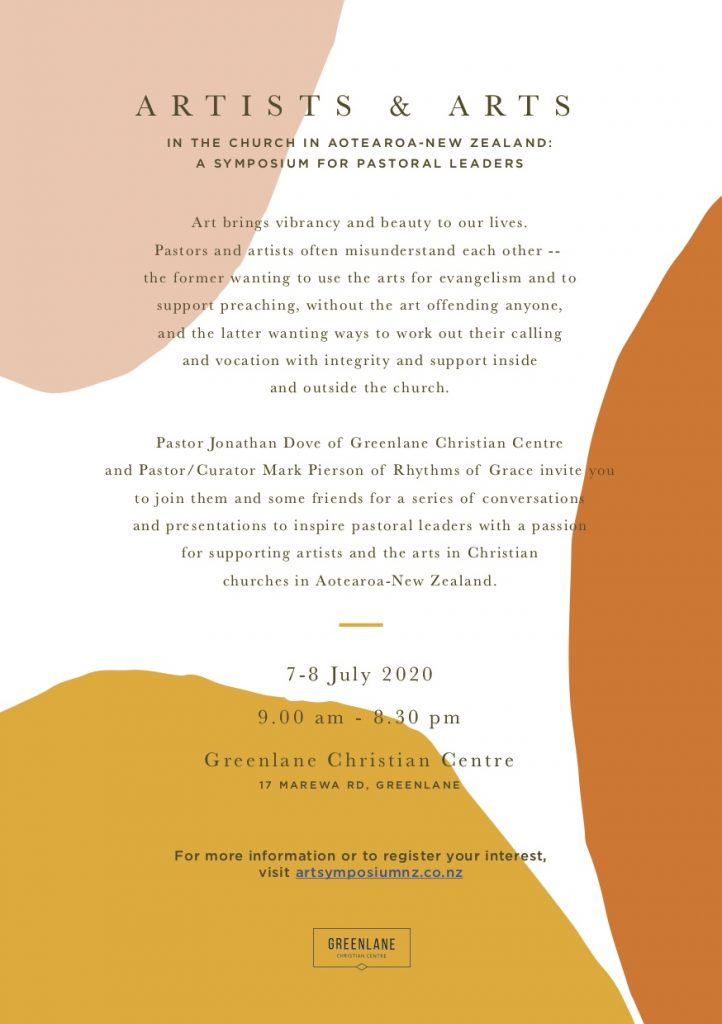While I have no talent for music or visual art, I do consider myself an artist. My art form is worship curation. In 2011 I met well known music producer, songwriter and musician T-Bone Burnett. He prayed for me and offered prophetic encouragement. The significance of that ocassion wasn’t that he was famous (a fact lost on me at the time), but that someone who understood what it was like to be an artist, and a Christian, was praying for me. A rare experience.
That experience is far too rare in the Church. Church leaders understand well the need to install $30 000 sound systems for sung worship, and will spend more money on instruments and training and in-ear fold-back for singers and musicians; but expect visual artists to “perform” for free, and supply all their own materials because it’s done “as unto the Lord”.
Art that is hung in churches tends toward the naive and representational because it has to be easily understood by the lowest common denominator of art-illiterate Christians in that congregation. Pastors commit three or four years to learning how to understand and unpack a biblical text, but if they can’t understand a painting or sculpture in 90 seconds they move on (or move it on.)
Artists who work out their calling outside of the church are even less understood and supported.
Church leaders, church boards, and even most congregations do not appreciate or value the calling that is on their artists, and the personal cost of that calling. Perhaps they hold to the myth of the struggling artist needing to struggle to produce better work, and see their lack of support as something positive!
This undermining inevitably arises from a lack of understanding of the arts and artists, and a fear of any controversy or offence art might cause to their fee-paying congregation.
The church is greatly impoverished by this ignorance, and our culture is denied the prophetic voice of artists who bring the voice of the Creator and the imago dei through their work. Followers of Jesus are subjected to bland, unengaging worship that offers little challenge to the values of the dominant culture outside the church, and the unchurched culture is not challenged or motivated to change by artists whose work has Kingdom-of-God oriented human flourishing and wellbeing at its heart.
Admittedly there aren’t many places art-illiterate person can go to learn how to exegete and appreciate art, let alone to understand the process behind a work and what has motivated the artist.
Artists and Arts in the Church in Aotearoa-New Zealand: a symposium for pastoral leaders plans to change that.
We’re offering a two-day gathering in July 2020 in Auckland for conversation with artists about their processes and their faith and calling. They will help us understand their motivations as well as their art. Anyone is welcome to attend but the focus will be those who curate or lead communities in worship and pastoral care – the places artists are found.
While we are not yet able to go public with names of artists who might join us in the conversation, you can register your interest here and receive updates as they become available. There is also not any fee set yet as we continue to look for funding that will enable us to gather great contributors and keep the fees at a reasonable level.
Knowing what interest there is would be very helpful to us in our planning.
Please diary the date, and promote the symposium through your networks if you like the concept.
A week after our symposium the Australia-based Arts and Theology community will offer what promises to be a fabulously inspiring event in Melbourne on July 16-19.
Two complementary events to recover the role of the artist as Christian vocation, engage and revive the church as patron, and bring a renewed depth of beauty and hope to our world.
